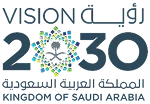Employee Assistance Programs (EAPs)have become essential in today’s workplace, providing crucial support foremployees facing personal and professional challenges. A staggering 78% ofemployers now offer EAPs, recognizing their importance in enhancing employeewell-being and productivity. These programs provide confidential counseling andresources to help employees manage stress, mental health issues, and lifechallenges, ultimately benefiting both the workforce and the organization.
In this blog, we will explorethe benefits of Employee Assistance Programs and bestpractices for implementing them effectively.
Understanding Employee Assistance Programs
An Employee Assistance Program (EAP)is a workplace benefit designed to support employees dealing with personal orwork-related issues that may affect their performance and well-being. EAPstypically offer:
- Confidential counseling services
- Resources for mental health support
- Financial and legal assistance
- Work-life balance resources
These programs are often providedthrough third-party recruitment vendors to ensure privacy while delivering comprehensivesupport.
Benefits of Employee Assistance Programs
The benefits of EmployeeAssistance Programs are extensive, impacting both employees andemployers positively. Here are some key advantages:
- Improved Mental Health: EAPs provide access to mental health resources, helping employees manage stress, anxiety, and depression. This support leads to improved overall well-being.
- Increased Productivity: By addressing personal issues that may interfere with work performance, EAPs enable employees to focus better on their tasks. Studies show that companies with EAPs experience a significant boost in productivity.
- Reduced Absenteeism: EAPs help lower absenteeism rates by providing timely assistance for personal challenges. Employees who utilize these services often miss fewer days at work.
- Enhanced Employee Retention: Offering an EAP demonstrates an employer's commitment to employee well-being. This can lead to increased loyalty and reduced turnover rates.
- Cost Savings: Investing in EAPs can yield substantial financial returns. For every dollar spent on an EAP, employers can save between five to sixteen dollars due to reduced healthcare costs and improved productivity.
Best Practices for Implementing EAPs
To maximize the effectiveness ofEmployee Assistance Programs, organizations should consider the following bestpractices:
- Choose the Right Provider: Select a reputable EAP provider that aligns with your company’s values and offers a range of services tailored to your workforce's needs.
- Promote Awareness: Develop a comprehensive communication strategy to inform employees about the EAP's benefits and how to access services. Utilize various channels such as emails, posters, and informational sessions.
- Train Managers: Equip managers with training on recognizing signs of distress in employees and how to refer them to the EAP effectively. This training fosters a supportive work environment.
- Integrate with Other Benefits: Ensure that the EAP complements other employee benefits. A holistic approach enhances overall employee wellness.
- Monitor Utilization Rates: Regularly assess how many employees are using the EAP services. This data can help identify gaps in service delivery or areas for improvement.
Conclusion
In conclusion, Employee AssistancePrograms are invaluable resources that benefit both employees and employersalike. By improving mental health, increasing productivity, reducingabsenteeism, enhancing retention rates, and saving costs, EAPs play a criticalrole in fostering a supportive workplace environment. Implementing bestpractices ensures that these programs are effective and accessible, ultimatelyleading to a healthier, more engaged workforce.
Withthe growing recognition of mental health's importance in the workplace,investing in an Employee Assistance Program is not just beneficial, it isessential for modern organizations striving for success in today's competitivelandscape.




























